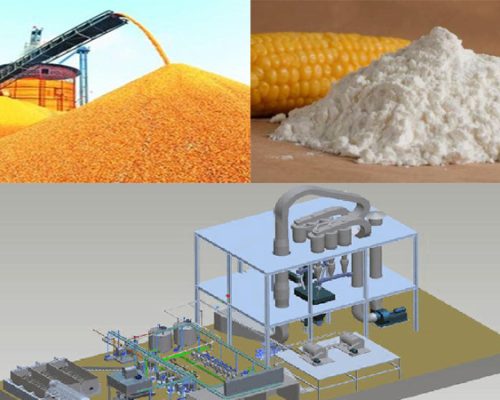Project Report For Maize Products Manufacturing plant
Introduction
Project report for Maize Products Manufacturing plant is as follows.
Corn is the most commonly produced crop in the world, and it is used for human nutrition, livestock feed, and fuel. In various parts of the world, various food technologies are currently being used to process industrially produced maize flours and maize meals into precooked refined maize flour, dehydrated nixtamalized flour, fermented maize flours and other maize products.
These goods include varied amounts of vitamins and minerals, and their manufacturing processes vary from raw grain to consumer end product, resulting in nutrient composition alterations. Mechanically processed dry maize yields entire or fractionated products depending on anatomical characteristics such as bran, germ, and endosperm.
Wet maize processing separates chemical constituents like starch and protein. Whole grain, dry milling fractionation, and nixtamalization are among the industrial procedures mentioned. The nutritional implications of vitamin and mineral losses during processing are discussed. The vitamin and mineral composition of maize is also discussed.

There are two forms of industrial processing for converting maize into human-consumable commodities. Milling is classified into two types: dry milling and wet milling. During the wet milling process, maize is separated into relatively pure chemical constituent groups of starch, protein, oil, and fibre.
Consumers rarely use wet maize milling products and coproducts directly, and they frequently require extra industrial processing before being consumed. Wet maize milling products are not often produced on a modest scale, either professionally or at home. The principal product, starch, can be refined into a variety of liquid and dry sweeteners or processed into a number of starch products.
Maize degermination requires mechanical separation and sorting, resulting in dry shelf-stable commodities that are devoid of the majority of germ and fibre. Wheat flour milling equipment, such as hammer mills, stone mills, roller mills, screeners, sifters, specific gravity separators, and aspirators, is used to reduce particle size and separate the grains.
Specialised machinery, such as degerminators, de-hullers, and peelers, may be required for maize processing. Before being ingested, whole, partially degerminated, and degerminated maize products must all be treated further. These steps can be completed in a large-scale industrial setting, a small-scale local processor, or even one’s own house.
Secondary operations can involve the addition of extra ingredients as well as thermal processing such as boiling, drying, frying, or baking, both of which might change the nutritional qualities of the final product. Alkali processing, also known as nixtamalization, is a type of industrial dry maize processing in which the entire maize is boiled with an excess of calcium oxide-treated water.
Market Potential Of Maize Products Manufacturing Plant
The Maize market is expected to be worth $1.37 billion in 2018 and to increase at a CAGR of 3.9 percent between 2019 and 2024. The simple availability of corn and its wide variety of uses in different sectors such as food and beverage, pharmaceutical, animal feed, textile industry, paper industry, and others are driving the growth of the India Corn Starch market.
The application section of the India Corn Starch Market was dominated by the Food and Beverage industry. Fast population increase, as well as rapid industrialisation, have fueled the rise of India’s corn starch industry.
The growing demand for maize industrial usage drives the growth of the maize processing sector in India, while the price of downstream items such as feed and maize flour rises. In the long run, it is lucrative to invest in a maize processing facility. The rise in capital investment has been consistent throughout the last three years.
Due to the green revolution and significant progress in biotechnology innovation in seed and production over the last several decades, genetically modified maize seeds with improved average maize yield have been available.
As per the Food and Agriculture Organization (FAO), global maize crop yield increased by more than 11 percent in 2014 compared to 2004, while total maize production increased by around 28 percent in 2014 compared to 2004 due to increased demand for maize from its various end-use application industries. Furthermore, rising ethanol demand is expected to boost maize market growth throughout the forecast period.
Project Report Sample On Maize Products Manufacturing Plant
Need Help?
Create 100% Bankable Project Report

